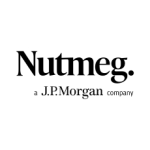Investing For Kicks
The defined return for a defined level of risk has made the structured investment an attractive addition to the range of investment options available and as a standalone fixed term investment, has continued to rise in popularity in recent years. The kick out investment has been the stand out in terms of popularity and so we take a closer look at what lies beneath this type of investment to try and understand what is driving this interest, as well as review some of the recent market trends.
Kick Out investments hitting the mark
In recent years, the kick out plan has proved to be one of the most popular types of structured investment, seemingly hitting the mark with a wide range of investors. Also capable of adapting its structure in line with market conditions and investor demands, the inherent flexibility in how these investments can be put together can be seen as one of the main reasons for their growing popularity.
How they work
Kick out investments, or ‘autocalls’ to use the correct investment term, pay out a defined return providing a predefined event takes place. This predefined event is linked to the performance of an underlying investment, often a stock market index such as the FTSE 100. If this trigger event occurs, the plan automatically matures early or ‘kicks out’, returning your original capital along with the defined returns offered at the outset. Should the trigger not occur, the plan keeps going to subsequent trigger anniversaries or until the end of the fixed term.
When considering which kick out investment might meet your needs, it is important to review and compare the differences between the various offerings available. Here are some of the main features to consider.
Headline return
The headline return on offer is understandably the investor’s initial focus when reviewing the investment. These are defined returns which are paid dependent on the performance of the underlying investment. The headline return is normally the annual return, which is then multiplied by the number of years invested should the investment mature early or at the end of the term. It is important to note that these returns are not compounded, for example if the headline rate is 9% and the investment kicks out in year 3, the growth return paid will be 27%.
The level of return on offer should be compared to risk free returns, perhaps those readily available from holding cash for a similar period of time. This will allow the investor to consider whether they are prepared to put their capital at risk in order to achieve the potential upside.
The underlying investment
The underlying investment to which each kick out plan is linked is important since it is the future movements of this which determines whether you receive any returns as well as what happens to your original investment.
The majority of kick out plans continue to use the FTSE 100 as the underlying index. This is widely recognised as the proxy benchmark for most investment managers and the historical volatility is familiar to many investors. The ability to review the rise and falls of the FTSE over more than 25 years offers the investor some context as to how high and how frequent the falls and rises have been.
What does ‘capital at risk’ actually mean?
In order to have the potential for returns which are currently far higher than those available from cash, the investor’s capital is put at risk. This means there is a possibility that you could lose some or all of your initial investment.
Conditional capital protection
The other feature of kick out plans and common to the majority of structured investments, is the inclusion of what is known as conditional capital protection. This means that should the investment fail to mature early or at the end of the term, your initial capital is returned subject to the performance of the underlying investment.
Typically, provided the underlying investment, for example the FTSE 100 Index, has not fallen below a predetermined level, your initial investment is returned in full. This barrier is commonly 50% of its value at the start of the investment. One feature to check is whether this 50% barrier is tested throughout the investment term or only at the end since the former is more likely to occur than the latter.
To put both methods into context, based on this morning’s opening value of 6,728.4, the index would have to fall to a closing level of 3,364.2 before your capital would be at risk, a level not seen since the middle of 1995. Please also remember that past performance is not a guide to future performance.
When can a kick out occur?
The early maturity can occur normally from the first anniversary and then every year thereafter. This is dependent on pre-determined market conditions being achieved, for example, the FTSE being higher than its value at the start of the plan.
However, due to market conditions there are currently a larger number of kick out investments that have pushed back the earliest year they can mature early, mostly from year one to year two. Not only does this have a potential impact on whether the plan provides a return, this should also be considered against the investor’s view of what could happen to the underlying investment in the coming years.
Counterparty risk
Since your investment is used to purchase securities issued by the counterparty, one feature that is important for investors to understand is counterparty risk – the likelihood that the particular institution in question, normally a bank, will be unable to repay any money owed. This could therefore have a potential impact on your returns which is separate to the performance of the underlying index.
There are a number of credit ratings available provided by leading credit rating agencies such as Standard & Poor’s, Fitch and Moody’s and although these are only one way to assess the counterparty to each individual plan, they do provide a useful starting point. In addition, a recent development has seen some plans offer the option to spread this risk by using a number of counterparties although the potential returns will be slightly lower.
Liquidity
Liquidity can be an important part of investing since none of us know what lies around the corner and we may need to draw on our investments before planned. Unlike investment funds, daily liquidity is not normally available and the secondary market is still developing so this is an important consideration.
Kick Out plans are certainly designed to be held for the full term, however most investments should be made on the basis of you not requiring the capital for at least five or six years and as such are the same as any other investment. In the event of requiring the funds earlier than expected a value can always be obtained from the plan provider and proceeds are normally available quickly. This value could be higher or lower than the original amount invested.
Popular in all markets?
Traditionally, kick out plans have proved popular when the FTSE has been at historically low levels on the basis that the investor considers it more likely that the index will be higher on at least one of the plan’s anniversaries. Should the investor miss out in years 1 or 2 for example, they still have a number of years remaining and the level of potential return keeps increasing year on year.
However, these plans have also generated particular interest when markets are at historically high levels. The reason is that for many plans to mature early, the level of the FTSE at the end of the year only has to be higher than its starting value. This means that even if the Index has only gone up by a small amount you would receive the full growth return, in which case you would have beaten the market.
Investec’s Enhanced Kick out Plan is our most popular kick out plan offering a headline return of 8%. There are no additional charges the plan can mature from year one onwards. Capital is at risk if the FTSE falls by more than 50%.
Stock market trends
The market volatility over recent years has led to indices largely tracking sideways, neither driving forward nor back for any prolonged period or certainty. The FTSE 100 for example has maintained a level above 6,000 for the whole of 2013 and yet has never broken through the 7,000 point barrier in its history. In this environment, investors can often be driven to look for investments that can produce cash-plus returns in a low growth, low interest rate environment.
Kick out investments have certainly delivered in this space, offering high single and double-digit returns, often paying after one to two years of the investment, while at the same time, with a conditional capital protection ‘barrier’, typically set at 50%, protecting the investor’s capital against all but the most extreme market falls.
Defensive features
When markets are at historically high levels it can lead investors to question whether now is the right time to invest, with conflicting expert views on what might happen to the FTSE to be expected. Certainly it is understandable that investors remain nervous about the way the markets have been behaving in 2013 and are therefore open to taking defensive measures within their investment.
In response, the market has seen a noticeable increase in the number of kick out investments being launched with defensive features, which broadly fall into two categories. The first is where the level required each year remains the same but is lower than its starting level. One such example is the Morgan Stanley Defensive Kick Out Plan which will mature early from year two onwards provided the FTSE is at least 95% of it starting level (i.e. the Index can fall up to 5%).
The second is the ‘step down’ kick out plan where the level of the FTSE required for the plan to mature reduces each year. The UK Step Down Kick-out Plan from Societe Generale can mature in year two provided the Index is at or above 100%, but in year three the index need only be at 95% of its initial level and it then reduces by 5% a year until either a kick-out occurs or the investment term expires. If the plan does not produce a return then your capital is at risk if the FTSE is below 50% of its starting value, measured at the end of the investment term only.
Price to be paid
With both types of ‘defensive’ plan no gain is made if the Index always remains below the required level, but with a reducing FTSE level required the chances of early payout are higher. The price to be paid for these defensive features is usually seen in a reduced potential return compared with a non-reducing Index level, which is to be expected. These plans therefore aim to balance the current levels of the FTSE with a competitive defined return and conditional protection of your initial capital. This allows investors to access a plan that can provide an annual return in excess of 7% even if the market falls slightly.
Full capital protection
In addition to the more familiar conditional capital protection described in the above investments, there has also been an increase in the use of this type of product combined with full capital protection. Aside from this difference, these plans work in exactly the same way and the potential returns on offer are higher than those currently available from the more traditional fixed rate bond.
One example is the Kick Out Deposit Plan from Investec Bank which will kick out from year two onwards provided the FTSE finishes higher than its starting level, providing 4.5% for each year invested. With the continued pressure on interest rates forcing savers to consider alternative options, the capital protection offered by these structured deposits have greatly broadened the appeal of this type of product. As deposits they also bring the peace of mind of Financial Services Compensation Scheme eligibility.
Click here to compare capital protected investments >>
An attractive balance
With both capital at risk and capital protected kick out plans, the investor has the benefit of knowing at outset the conditions that need to be met in order to provide the stated returns. Therefore, not only are they relatively straightforward to understand, but they also offer an attractive balance of defined return for a defined level of risk, with higher potential returns on offer for those prepared to put their capital at risk.
This allows the investor to consider whether the potentially higher returns are worthwhile compared to the ‘risk free’ returns from cash held for a similar period. With cash returns continuing at their record lows, this has been an easier decision in recent years which perhaps helps to explain why kick out plan have increased in popularity.
Although the opportunity to receive the headline yield is a strong motivator for both savers and investors, in following the investment principle of risk v reward it is wise to dig deeper into the underlying features of the plan before proceeding.
Compare kick out investments >>
No news, feature article or comment should be seen as a personal recommendation to invest. Prior to making any decision to invest, you should ensure that you are familiar with the risks associated with a particular investment. If you are at all unsure of the suitability of a particular investment, both in respect of its objectives and its risk profile, you should seek independent financial advice. Tax treatment depends on your individual circumstances and may change. Make sure you check whether any charges apply prior to transferring any existing investment.
The capital protected plans referred to in this article are structured deposit plans that are capital protected. There is a risk that the company backing the plan or any company associated with the plan may be unable to repay your initial investment and any returns stated. In this event you may be entitled to compensation from the Financial Services Compensation Scheme (FSCS), depending on your individual circumstances. In addition, you may not get back the full amount of your initial investment if the plan is not held for the full term. The past performance of the FTSE 100 Index and any of it shares is not a guide to its future performance.
The investments referred to in this article are structured investment plans are not capital protected and there may be the risk of losing some or all of your initial investment. There is also a risk that the company backing the plan or any company associated with the plan may be unable to repay your initial investment and any returns stated, in which case you may not be entitled to compensation from the Financial Services Compensation Scheme (FSCS). In addition, you may not get back the full amount invested if the plan is not held for the full term. The past performance of the FTSE 100 Index or any shares listed within the Index is not a guide to their future performance.
Tags





